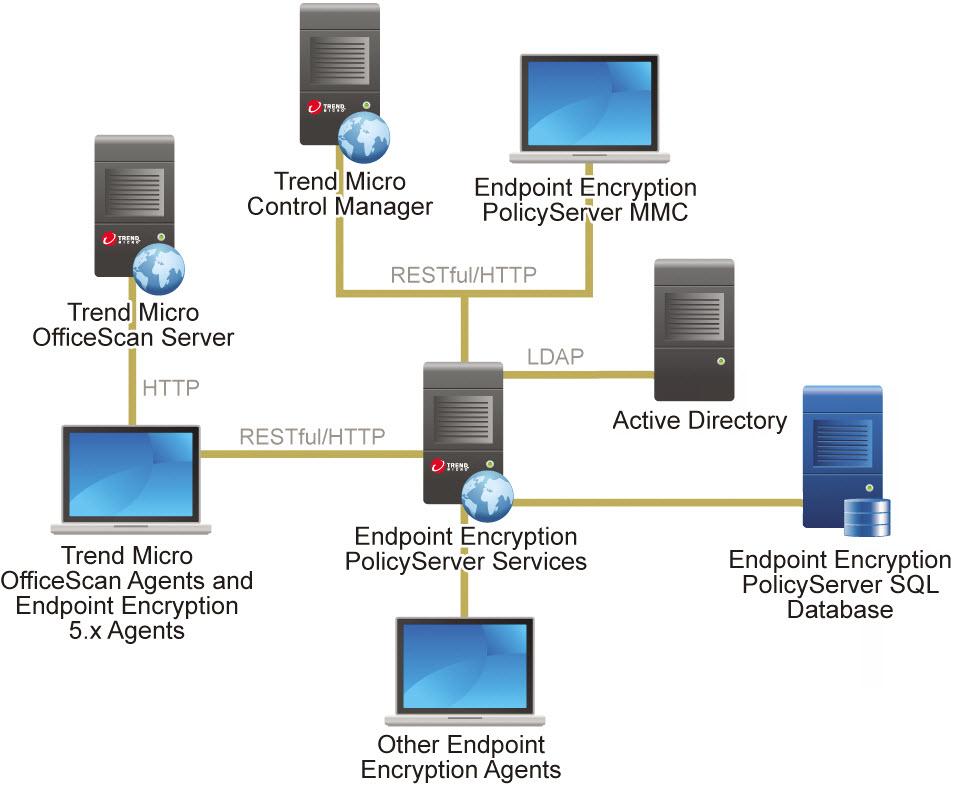|
|
|
NoteFor information about deployment scenarios, see Deployment and Upgrade
Overview in the Endpoint Encryption
Installation and Migration Guide.
|

|
Component
|
Description
|
||
|---|---|---|---|
|
Endpoint Encryption
PolicyServer Services
|
PolicyServer consists of several services
that centrally control policies, authentication, and reporting.
PolicyServer consists of the following:
For information about PolicyServer, see About PolicyServer.
|
||
|
Endpoint Encryption
PolicyServer SQL Database
|
The Microsoft™ SQL Server
database stores all user, policy, and log information. Install the
database on the same server as PolicyServer, or separately. Flexibly
configure PolicyServer using Microsoft SQL Server or Microsoft SQL
Express.
For information about database configuration options, see the
Endpoint Encryption
Installation and Migration Guide.
|
||
|
Endpoint Encryption
PolicyServer MMC
|
PolicyServer MMC is the native interface option
to remotely manage PolicyServer.
|
||
|
Trend Micro
Control Manager
|
Trend Micro
Control Manager is an option to
remotely manage PolicyServer while also integrating with other
managed Trend Micro products.
Administrators can use the policy management
feature to configure and deploy product settings to managed products
and endpoints. The Control Manager
web-based management console provides a single monitoring point for
antivirus and content security products and services throughout the
network.
|
||
|
Endpoint Encryption
5.0 Patch 3 agents
|
All Endpoint Encryption
5.0 Patch 3 agents communicate with
the PolicyServer Endpoint Encryption
Service using a RESTful web API.
For more information about Endpoint Encryption agents, see:
For information about Endpoint Encryption agent communications, see About PolicyServer.
|
||
|
Other Endpoint Encryption agents
|
All legacy Endpoint Encryption agents (3.1.3 and
older) communicate to the Legacy Web Service on PolicyServer. For
details about agent communications, see About PolicyServer.
|
||
|
Active Directory
|
PolicyServer synchronizes user account information by
communicating with Active Directory using LDAP. Account information
is cached in the Microsoft SQL database.
|